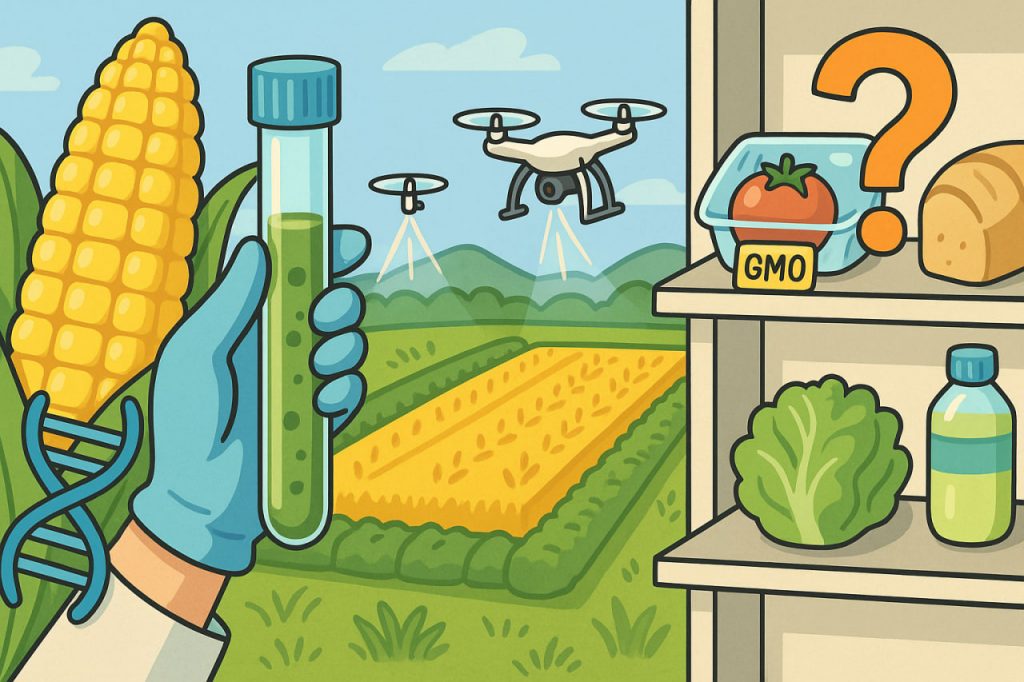Genetically modified organisms (GMOs) are one of the most debated topics in modern agriculture and food production. Advocates argue that GMOs offer solutions to hunger, crop diseases, and climate change, while critics warn of potential long-term consequences for human health, biodiversity, and food sovereignty. The term “hidden threat” often appears in discussions driven by skepticism about the safety, regulation, and transparency surrounding GMO usage. This article explores both sides of the debate and presents current scientific consensus on the matter.
What Are GMOs and How Are They Created?
A GMO is any organism whose genetic material has been artificially altered in a laboratory to express desirable traits. Common examples include pest-resistant corn, herbicide-tolerant soybeans, and tomatoes engineered for longer shelf life. Genetic modification is achieved through techniques such as gene splicing, CRISPR-Cas9, or the insertion of genes from other species.
Unlike traditional breeding, which takes generations, genetic engineering offers precise and rapid modification. However, this precision also raises questions about unintended effects. Regulatory agencies require extensive testing before commercialization, but some scientists and advocacy groups argue that long-term ecological and health consequences are still not fully understood.
Potential Health Concerns and Scientific Uncertainty
The main public concern about GMOs centers on food safety. Critics suggest that altering the genetic makeup of food might introduce new allergens, change nutrient composition, or produce toxins.
Skeptics argue that existing studies are often conducted or funded by the same corporations that produce GMO crops. Furthermore, the absence of definitive long-term studies leaves room for caution. For many consumers, the issue is not just scientific but ethical: they demand transparency and the right to choose.
Environmental and Agricultural Impacts
GMOs have transformed global agriculture by increasing yields and reducing pesticide use—at least initially. However, environmentalists raise alarms about monocultures, gene flow, and superweeds. Overreliance on herbicide-resistant crops has led to the evolution of weeds that are no longer affected by common chemicals like glyphosate.
Additionally, GMO cultivation may impact non-target organisms, such as pollinators or beneficial insects. Crossbreeding between GM crops and wild relatives can result in genetic contamination, threatening local plant varieties. These issues are especially concerning in regions with rich native biodiversity and weak regulatory enforcement.
Corporate Control and Food Sovereignty
A key criticism of GMO agriculture is the concentration of power in a few multinational biotechnology companies. These corporations often patent their seeds and require farmers to purchase them annually, eliminating the age-old practice of saving and replanting seeds. This model raises concerns about food sovereignty, especially in developing countries.
Dependence on commercial seed suppliers can make local agriculture more vulnerable to market fluctuations and legal disputes. Furthermore, traditional knowledge and indigenous farming systems are often ignored or displaced in favor of standardized GMO solutions. For critics, this undermines not just ecosystems but also cultural and agricultural diversity.
Labeling, Regulation, and Consumer Rights
The public debate has prompted many countries to adopt mandatory labeling of GMO products, allowing consumers to make informed choices. The European Union enforces strict GMO regulations and bans certain varieties, while other nations such as the United States allow widespread GMO cultivation with less restrictive labeling.
Supporters of transparency argue that labeling is essential for ethical consumption, while opponents worry that it creates unjustified fear. Despite the controversy, there is broad consensus that public awareness, independent research, and global cooperation are essential to responsibly managing GMO technologies.
Conclusion
The question of whether GMOs represent a hidden threat depends largely on the lenses of science, ethics, and policy. As biotechnology advances, society must demand rigorous oversight, ethical standards, and inclusive dialogue to ensure that innovation does not come at the cost of sustainability or trust.
I don’t recommend eating GMO products, as nature has created everything with great care.
Glossary
- GMO (Genetically Modified Organism) — an organism whose genetic code has been altered by humans using biotechnology
- CRISPR-Cas9 — a modern genome-editing tool that allows precise DNA modification
- Food sovereignty — the right of communities to control their own food systems
- Gene flow — transfer of genetic material from GMOs to wild relatives
- Monoculture — agricultural practice of growing a single crop over a large area, often reducing biodiversity
- Superweed — a weed that has evolved resistance to herbicides due to repeated exposure
- Labeling — marking products to indicate GMO or non-GMO content


